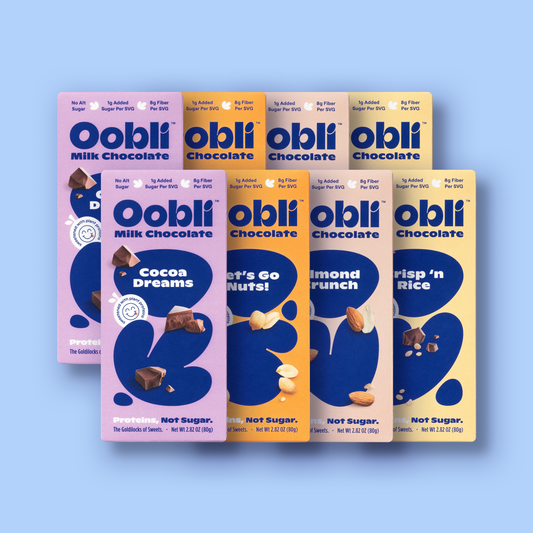You’ve heard it a million times: “Eat more fiber.” But have you ever stopped to wonder why? Sure, fiber keeps things moving and helps prevent those pesky bouts of constipation, but its benefits go way beyond the bathroom.
Let’s break down the facts on fiber in a way that’s simple to digest (pun intended).
What Is fiber?
Fiber is a type of carbohydrate, but unlike most carbs, your body can't digest it. That means it passes through your system mostly intact, working its magic along the way.
Fiber is found naturally in fruits, vegetables, whole grains and legumes. There are two main types:
-
Soluble fiber: Pulls in water and turns into a gel in your stomach which slows digestion and makes you feel full.
-
Insoluble fiber: This does not dissolve in water and adds bulk to your stool to help keep everything moving smoothly through your digestive tract.
Why your gut loves fiber
While you can’t digest fiber, the good bacteria in your gut can. Some fiber can act as prebiotics, meaning they feed the healthy bacteria in your large intestine which then helps reduce inflammation and support gut health. This is especially helpful for conditions like IBS, Crohn’s and ulcerative colitis.
But as these bacteria do their job, they release gases. So, beware that a sudden uptick in fiber might bring a bit of bloating or gassiness at first, but it usually settles down as your body adjusts to the change.
Fiber’s full-body benefits
A high-fiber diet doesn’t just benefit your digestion. It can also:
-
Support heart health by lowering “bad” LDL cholesterol
-
Improve blood sugar control, especially important for people with diabetes
-
Help manage weight by keeping you fuller longer
-
Reduce inflammation and lower blood pressure
-
Lower the risk of conditions like diverticulitis, colorectal cancer and heart disease
How much fiber do you need?
The National Academy of Medicine recommends:
-
Women under 50: 25 grams/day
-
Women over 50: 21 grams/day
-
Men under 50: 38 grams/day
-
Men over 50: 30 grams/day
However, most of us fall short of these recommendations. But luckily there are easy, and tasty, ways you can increase your dietary fiber.
-
Switch to whole grains like brown rice, oats and whole wheat bread
-
Add legumes like lentils and beans to soups or salads
-
Snack smarter with raw fruits and veggies, popcorn and nuts
-
Make your meals colorful—more fruits and veggies means more fiber
-
Drink plenty of water as fiber works best when it can absorb fluids
These shifts not only add more fiber but generally contribute to an overall healthier diet.
For most people, adding more fiber is a simple, powerful way to support better health. But a high-fiber diet isn’t right for everyone. If you're making big changes to your diet, it’s always a good idea to check in with a healthcare provider.




